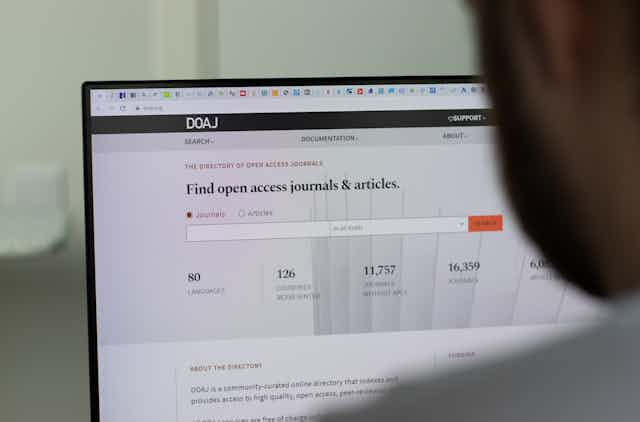Open access (OA) journals are academic, peer-reviewed journals that are free and available for anyone to read without paying subscription fees. To make up for lost subscription revenue, many journals instead charge author fees to researchers who wish to publish in them. These fees can reach thousands of dollars per article, paid out of publicly funded research grants.
This costs Canadians millions of dollars annually, and lines the pockets of major publishers whose profit margins rival those of Pfizer. However, thousands of OA journals don’t charge author fees, proving that publishing in open access journals doesn’t have to be this expensive.
I work as an academic librarian at McGill University, serving as an on-campus expert on open access publishing. According to research conducted by myself and a colleague, Canada is home to nearly 300 no-fee, open access journals. This is important, as author fees serve as a barrier for many researchers to make their work available for anyone interested.
Cost of publishing
Typical costs of publishing an academic journal include salaries for copy editors, typesetters and translators, and fees for technical infrastructure such as web hosting and submission systems. There are also costs associated with running non-OA journals, such as managing paywalls, subscription payment systems and salaries for sales personnel.
Publishing a journal requires money, but that amounts to only 10 to 15 per cent of what publishers charge authors to make their work open access. Author fees are disproportionate with publishing costs, and correlate to the journal’s prestige, impact and profit model.
In this environment, author fees will continue to increase so long as someone can pay for it. It also means that open access publishing privileges a certain set of researchers.
A case study
McGill University Library supports a no-fee, OA science journal called Seismica, which publishes peer-reviewed research in seismology and earthquake science. Seismica represents an alternative to rising author fees, such as Nature‘s controversial $10,000+ open access author fee.
A community of nearly 50 researchers and international scientists make up Seismica’s editorial team. McGill Library covers the technical costs for Seismica, including DOI registration, preservation, web hosting and management of the manuscript submission platform.
Volunteer labour provided by the Seismica team handles the journal’s operations: soliciting reviewers, reviewing submissions and publishing accepted manuscripts. The journal is also responsible for creating its own author guidelines, updating its website and promoting itself. Seismica provides authors with preformatted templates to reduce time spent on layout and production.
McGill Library is one of many Canadian libraries supporting journals in this manner. Of the nearly 300, no-fee OA Canadian journals we researched, 90 per cent were supported in some way by academic libraries.
Community value
Journals aren’t simply about publishing papers; to be successful, they must be recognized and valued by the community. At Seismica, significant effort and resources have gone into grassroots community building. In a publish-or-perish culture, launching a new journal isn’t enough — it must be valued and respond to its community’s needs in order to attract submissions.
Editors and peer reviewers contribute their time to journals as a part of their service to their profession. Some researchers and editors are dissatisfied with providing volunteer labour to publishing companies producing millions of dollars in profits. No-fee, scholar-led journals provide an attractive alternative; this has certainly been a motivating factor for the editorial team at Seismica.
Seismica is unique as a no-fee, OA science journal. Our research identified that Canadian STEM journals were nearly 40 per cent less likely to be open access than journals in other disciplines. This is also true globally. One study found that humanities and social sciences journals represented 60 per cent of no-fee, OA journals, compared to 22 per cent in science and 17 per cent in medicine.
Furthermore, science and medicine journals make up the majority of fee-charging, OA journals. This is likely because these journals were early adopters of the author-fee model; researchers publishing in them also had larger grants available to pay these fees.
Future publishing models
As author fees charged by the big publishers skyrocket, libraries, universities and funding agencies should encourage alternative publishing models. No-fee, OA journals can serve this need, but can be precarious and require support.
Canada, for example, has a grant to support journals in the social sciences and humanities, but no such grant exists at the federal level for science and medical journals. Canada has also been a leader in launching a cooperative funding model for open access journals.
The focus here, too, has been on arts and humanities and social sciences. Canadian libraries, universities, funding agencies and nonprofit publishers should continue working together to ensure a sustainable, affordable publishing system for all disciplines.
Author fees limit affordable open access for researchers, particularly those without grant funding. Supporting no-fee OA journals is one way forward.


